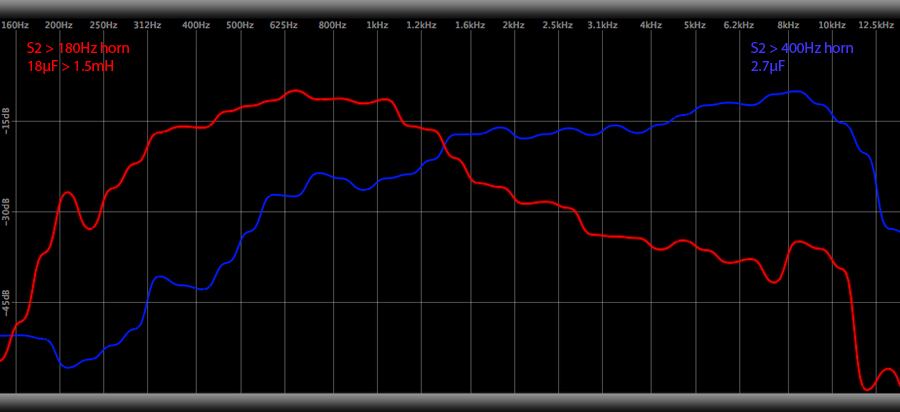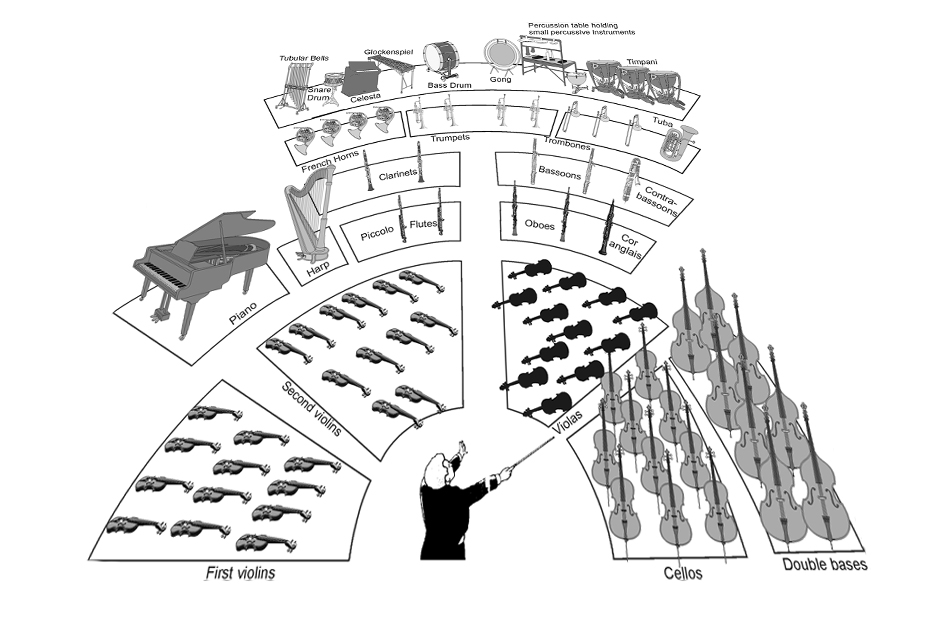Rerurn to Romy the Cat's Site
In the Forum: Horn-Loaded Speakers
In the Thread: Adding one more spherical to Macondo.
Post Subject: Where to cross MF & theory on depiction of depthPosted by jessie.dazzle on: 9/28/2010
fiogf49gjkf0d
Romy wrote:
"...I will most certainly do not need it to go over 1000Hz, why would I? It is very much not my objective. All the I would like to do it to give to Fundamentals Channel some room from the bottom to breathe..."
Three reasons:
1) To try high passing your upper-MF channel (S2 > 400Hz horn) above the 1250Hz secondary resonance assiciated with the plastic-suspended diaphragms of the S2 when used in wide bandwidth configuration. If I understand correctly, you currently use these diaphragms and run the driver from 10.5KHz down to 1KHz.
2) To try unloading the lower end of that same channel which, again if I understand correctly, in your case is currently covering more than three octaves. Reducing that range may in practice not turn out to be desirable, but I would have thought you'd be curious.
3) To simply evaluate which driver/horn combination is best suited to reproduce the 1-1.5KHz range.
"...What crossover point and type of filter you use for Fundamentals Channel LOW pass filter?..."

Above image shows response of S2 drivers with metal-suspended diaphragms.
Concerning perception of the vertical center of the sound image; no, we do not want the perceived center to be located somewhere in heaven or hell, but the view of most people who practice audio is that it would be desirable to produce the entire audible spectrum from left and right points as close to ear-level (purgatory?) as possible. In answer to that, I would like to put forth the following idea or sort of hypothesis:
First, what is the objective of audio? For me, ideally it is the selective recreation of an event according to and in reinforcement of the artist's original intention, as well as what I myself might decide to "keep" from that event, had I witnessed it live (the more thoroughly the demonstration integrates and allows me to grasp concepts as concrete wholes, the more I will be engaged; the more those wholes correspond to my view of what life should be, the more I will keep). When reproducing live events witnessed in physical space, that space too must be taken into account.
With the exception of small clubs where we might hear a jazz trio, when we listen to live music, we rarely find ourselves on the same plane with the musicians; we are usually looking down on them. This is not a chance occurrence; when seen and heard from this angle, the depth of the space, in both vision and sound, are more clearly revealed.
Look at the image below showing the layout of an orchestra from the point of view of the listener; this is two dimensional data that successfully depicts a third dimension, that of depth. It does this by using both the horizontal and the vertical (if it were a more accurate drawing, it would make better use use of relative scale and relative intensity). Notice, there are instruments located at the top, middle and bottom of the image. I'm not trying to be silly; realize that sight (light) and sound (pressure) are first perceived as binary, two-dimensional (up-down/left-right) sense data; from this, our brain extrapolates the third dimension; depth.

Yes intensity (amplitude) and cast shadows (masking) play a part, but a really convincing illusion of depth is difficult without making use of the vertical axis. I think the depiction of depth in audio relies on the vertical; I think we are using it and I think we are not acknowledging it... It is what gives some mono recordings a semi-convincing illusion of depth.
Absence of the vertical axis is the principal limitation and resulting frustration associated with headphones.
jd*
Rerurn to Romy the Cat's Site